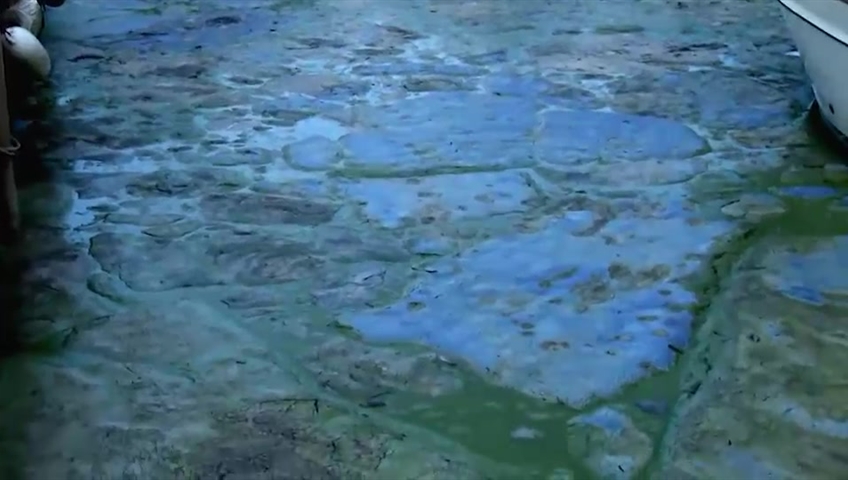A lake can seem beautiful and harmless from a distance, but on the surface of the water could lie dangerous blue-green algae.

Also known as cyanobacteria, algae can look like grass clippings floating around the water, or even spilled paint. But it’s the toxins inside algae that pose a threat to humans, and especially to pets.
Elizabeth Kennedy, director of Nova Scotia Environment and Climate Change water programs, says algae can have serious health effects.
“In humans, it’s more likely to cause headaches, stomach aches, hives,” Kennedy says. “If it touches your skin, you can get rashes.”
Several algae alerts issued
There are algae alerts for lakes across the province, including Oathill Lake in Dartmouth, Covey Lake in Lunenburg County, and Armstrong Lake and Lake Torment in Kings County.
Although it’s not unusual for blue-green algae to appear this time of year, some residents who frequent Oathill Lake say they were unaware it had already occupied the water.

Get weekly health news
“So far, I haven’t witnessed any blue-green algae in the water,” says local resident Ray Williams. “I have seen some people swimming fairly early in the season, but no, nothing yet.”
“We’re all a little shocked and sad,” says another resident, Selina Fortier. “(It’s) a place where we love to swim and walk around and take our dogs.”
David O’Connor, who was walking a friend’s dog alongside Oathill Lake, says he was unaware algae had occupied the lake.
He says he believes a sign should be put up, to let people know whenever and wherever it is detected.
“At least at the point where people let their dogs in, there should be a sign,” O’Connor says. “It would break my heart if I let this dog I’m babysitting in the lake, and something happened to it, that would just be awful
The province says if you see blue-green algae, treat it as potentially toxic, and report it to your local environment and climate change office.





Comments